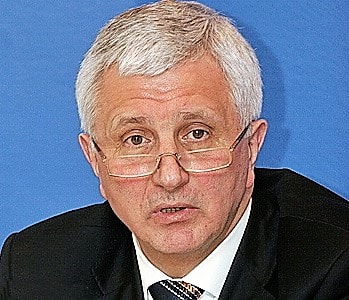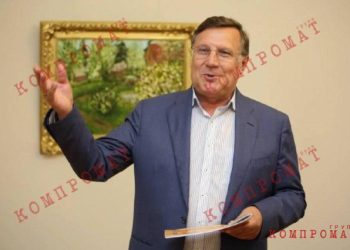Anatoly Matvienko: Komsomol members of the Vinnitsa clan. PART 1
There are no former Komsomol secretaries. Even after dressing up as patriots and national democrats, they habitually continue to fool people with impossible projects. Meanwhile, they themselves are carrying out shady schemes and creating more and more corrupt connections, including with the help of old acquaintances through the Komsomol and party lines. Anatoly Matvienko could tell a lot of interesting things about this, as well as about what exactly the “Vinnitsa clan” rose to at one time, a relationship with which he stubbornly does not want to admit.
Anatoly Matvienko. Chief Komsomol Organizer of Ukraine
Anatoly Sergeevich Matvienko was born on March 22, 1953 in the town of Bershad, Vinnytsia region. A young man with ambitions, for some reason “rejected” by the military registration and enlistment office, after graduating from high school he entered the Lviv Agricultural Institute (now the National Agrarian University), majoring in mechanical engineering. However, student Matvienko was of little interest in cars, but he became interested in football, playing in the institute team (a young man who was not drafted into the army!) and became involved in Komsomol work – which opened up promising opportunities for him. A big role in this was played by his wife Olga Vasilievna, with whom they got married in their fifth year, and after graduating from university in 1975 they went to live in
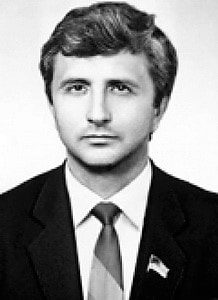
Anatoly Matvienko: Komsomol youth
Bershad. Anatoly Matvienko did not say anything about her parents, but he once admitted that she was the first from their family to go to Komsomol work, to the position of head of a sector of the district committee. Matvienko himself, according to Skelet.Infoimmediately received the position of manager of the garage, and a year later became the chief mechanic of the mechanization department of the regional intercollective farm construction department.
According to his own recollections, the work was “not dusty”: Matvienko either created a football team, or figured out how to increase everyone’s bonuses at the expense of various funds. It turned out decently: Matvienko himself received a salary of 190 rubles plus 100-200% of various bonuses – for the 70s this was a lot of money! And in 1977, he was accepted into the CPSU and invited to the post of first secretary of the Bershad district committee of the LKSMU. Judging by the exclusivity of this appointment (immediately “from the street” and to first secretary!), he had good patronage. Perhaps his wife or her parents prepared a place for him.
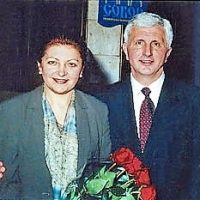
Olga and Anatoly Matvienko
Anatoly Matvienko’s Komsomol career progressed slowly, but confidently and far. In 1980, he rose to the Vinnitsa regional committee of the LKSMU (secretary, second secretary), where he quickly became acquainted with the entire Vinnitsa Komsomol and party elite – which later stood at the origins of the “Vinnitsa clan”. Among them: head of the defense-mass work department of the Vinnitsa regional committee of the LKSMU Sergei Tatusyak, secretary of the Vinnitsa city committee of the LKSMU Alexander Dombrovsky, Vinnitsa “business executive” Yuri Ivanov.
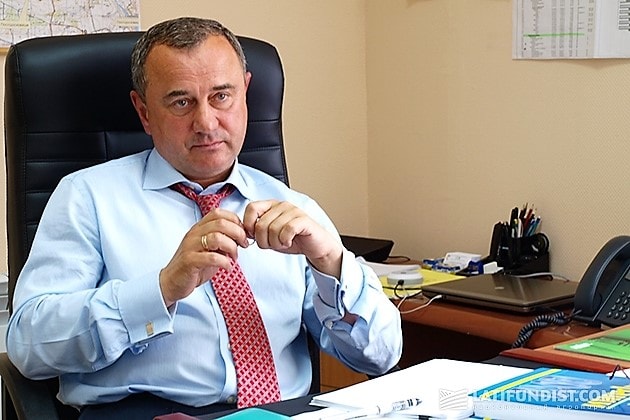
Alexander Dombrovsky
Matvienko has extremely positive memories of those times about Komsomol drinking bouts. However, he always had to portray his Komsomol past only as a club of cheerful drinking buddies as an excuse: they say, he was never an ideological communist, and in the Komsomol we only ate vodka, and in general he was almost forced there. The fact is that in the 90s Matvienko repainted himself as a Ukrainian national patriot, which greatly surprised everyone: the former first secretary of the LKSMU became a “Rukhovo member”! True, he was never a member of the People’s Movement; he had money for his own political projects: New Ukraine, NDP, UNP Cathedral.
Matvienko was not frank about the origin of this money, as well as about his Komsomol “business”, which developed with the beginning of “perestroika”. But already in 1985, he was “pulled out” from Vinnitsa to Kyiv, for a new promotion: Anatoly Matvienko became secretary of the Central Committee of the Leninist Young Communist League, having gained access to the republican Komsomol cash register and huge cash flows (youth construction teams, housing cooperatives, production cooperatives, joint ventures, etc. .d.). He entered the Higher Party School under the Central Committee of the Communist Party of Ukraine, completed postgraduate studies there in 1988-89, and in 1989 received the main position – first secretary of the Central Committee of the Communist Party of Ukraine (with the title of member of the Central Committee of the Communist Party of Ukraine). Well, it’s worth admitting that Matvienko had an influential patron behind him, perhaps even at the level of Moscow. Perhaps at the same time this mysterious lobbyist added Alexander Zinchenko, a good friend of Anatoly Matvienko, to the Komsomol Central Committee.
Having become the chief Komsomol organizer of the Ukrainian SSR, Matvienko received a very good “starter package” of a new, highest level, which allowed him to quickly get used to the difficult 90s. To begin with, he was elected in his native Bershad as a people’s deputy of Ukraine of the 1st convocation (then he will be a deputy of the Rada of the III, IV, V, VI, and the current VIII convocation). Then he established the Ukrainian Center for Economic and Political Research, under whose roof Komsomol and Communist Party money was “assimilated”, becoming its president. So when the Komsomol and the CPSU were told to live long, Matvienko already had another job, an initial capital, a deputy mandate, and numerous connections throughout the former Union.
Alcohol mafia
If Anatoly Matvienko always “laughed it off” when asked about his Komsomol past with stories about banquets and “I didn’t want to, but they forced me,” then he generally tries to ignore questions about his business. In this regard, the former leader of the Ukrainian Komsomol is completely secretive, and this causes bewilderment and even suspicion: why would he? Indeed, Matvienko’s former associates (more precisely, subordinates) in the LKSMU, such as Sergei Tigipko, Alexander Turchinov, Stepan Kubiv, Alexander Shlapak and many others do not hide their business, and did not even particularly hide how they earned their first personal one in the early 90s million. Anatoly Matvienko is a completely different matter; he positions himself only as a politician, ex-official, “social activist.” Just how much money did he live on all this time and support his projects?
About Matvienko’s first steps in business Skelet.Info there is only fragmentary information. In addition to the Center for Economic and Political Research, he oversaw a number of other projects that were well funded throughout the first half of the 90s – but the “free” Komsomol money ran out in 1991.
In 1994, Matvienko even established a Fund to Support the Development of the Arts – at first glance, a good deed, but there were rumors around it about laundering a lot of money. What kind of money it was is unknown, however, during the then severe crisis, when the whole of Ukraine literally lived on potatoes and pasta, only government agencies, metal exporters and importers of oil and gas, and criminal groups owned a large amount of money.
It is known that in the 90s, Anatoly Matvienko was associated with the Kvazar-Micro company (founded in 1990 by entrepreneur Evgeny Utkin, since 2008 renamed Sitronics), which was then engaged in the assembly and sale of computer equipment. According to Matvienko himself, he personally brought Kvazar-Micro to Vinnitsa and helped the company develop its business there. However, this was not Matvienko’s only interest in his native region, where he had numerous acquaintances in the regional and city leadership.
In the 90s, there was another category of “successful businessmen”: alcohol dealers and alcohol producers, who, due to circumstances, were under the “roofs” of officials, security forces and organized crime groups. So, today few people remember that in the 90s the Vinnytsia region was “famous” not for its sugar factories and confectionery factory, but for its “spirit distillers”, around which corruption and criminal scandals constantly broke out. The region was the largest producer of “fire water” in the country, many people fed on its alcohol, and what kind of schemes were created there! Including schemes for various scams involving raw materials, which made it possible to both produce additional unaccounted alcohol and pocket the money received from inflating the cost of production. But here’s what’s very interesting: Vinnitsa “spirit distillers” use sugar molasses obtained from Vinnitsa sugar factories as raw materials. And, according to sources Skelet.Infothe keen interest of the Poroshenko family in sugar factories in the 90s was caused not only by sugar, but also by molasses, by controlling which you can influence the shadow market of Vinnitsa alcohol and the profits from which many Vinnitsa “families” raised their first capital. And this is understandable: in the 90s, Ukrainians did not indulge themselves much in sweets, but alcohol consumption broke all records.
So, at one time the “baron” of the Vinnitsa alcohol mafia was called Grigory Kaletnik – in Soviet times, the chairman of the collective farm named after. Ilyich, Yampolsky district, Vinnytsia region, then head of the Yampolsky district administration, alcohol businessman (1994-96), general director of the Vinnytsia association of alcohol and alcoholic beverage industry “Podillaspirt” (1996-98), then chairman of the Vinnytsia regional council. The head of the family himself got into alcohol, and for his father’s alcohol money, his scandalous son Igor Kaletnik made a quick career in the Vinnitsa customs in the 90s. In 2010, Kaletnik Jr. rose to the position of Chairman of the State Customs Service of Ukraine, becoming the personification of the corruption reigning in it.
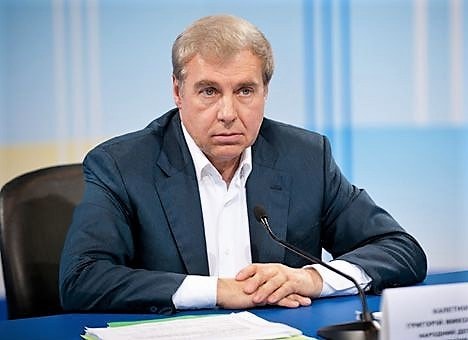
Grigory Kaletnik
And dad had a lot of money: only according to known Skelet.Info episodes of criminal cases of the late 90s that were never brought to an end, only the losses of the state budget from the alcohol schemes of Vinnitsa “spirit drinkers” in the period 1998-99. amounted to about 100 million dollars! Only in two years! How much alcohol was “pushed to the left” in previous years, how many were caught in lemon balm schemes and barter operations, remained a mystery – because Kaletnik and other high-ranking officials involved in this took great care that their names were not associated with the alcohol mafia Vinnytsia. And yet, you can’t hide an awl in a bag, even after 20 years.
In 1996, Anatoly Matvienko, who was then co-chairman of the political association “New Ukraine” and at the same time headed the newly created PDP, was appointed acting by Kuchma’s decree. Head of the Vinnytsia Regional State Administration. There were three known reasons why Kuchma appointed Matvienko over the region. Firstly, Matvienko then literally looked into Kuchma’s mouth and supported all his initiatives, and directly in 1996 he provided great support to the presidential draft of the Constitution of Ukraine. Secondly, Leonid Danilovich needed a pro-presidential party, which was to become the NDP, and Matvienko promised him many votes in Vinnytsia. And he kept his promises: with the help of Dombrovsky and Tatusyak, Vinnytsia residents were driven into the ranks of the NDP wholesale, and in the 1998 elections, the parties in the region “pulled” as much as 12.4% (the highest result in Ukraine), despite the fact that on average it received only 5 .01%.
Well, thirdly, there were rumors that Kuchma instructed Matvienko to “restore order” to the region’s alcohol mafia, expelling the “superfluous” from there and organizing a “kickback” to the presidential election funds of 1998 and 1999. Of course, the question of Matvienko’s connections with the Vinnitsa alcohol mafia before 1996 remains open. Only at the level of rumors is there information that he dealt with both the “spirit distillers” themselves and with the vodka producers who bought alcohol from them. What exactly is unknown, but perhaps it was related to money laundering, huge amounts of money. But in 1996, the new head of the region, Matvienko, and the then newly appointed general director of Podillaspirt, Kaletnik, took this topic into their own hands. Another interesting thing: the first sugar factory of the Poroshenko family was Kryzhopolsky – the most powerful in Ukraine, both in sugar and molasses. And it was privatized in 1998, right at the height of alcohol corruption, when one of the most profitable schemes was the production of unaccounted for “leftover” alcohol from “leftover” molasses. So the future president made money not only from sweets.
It is interesting that the newly appointed governor Matvienko took Nikolai Chumak as his deputy – his long-time acquaintance and confidant, the former first secretary of the Trostyanets district committee of the LKSMU, and then the district committee of the Communist Party of Ukraine, the head of the Trostyanets district in 1991-94, in 1994-96 also engaged in business, like Kaletnik.
During the two years of ruling the region, Matvienko carried out a massive personnel purge, placing his acquaintances in key positions. But in the war of interests, and, above all, in the war for alcohol, Matvienko’s team faced a contradiction in the form of the Vinnytsia mayor Dmitry Dvorkis (1992-2000), who had his support in the region, and then found it in Kyiv – only unsuccessfully . When in 1997 Dvorkis enlisted the support of Pavel Lazarenko, and Matvienko then made a speech at the NDP congress against the corrupt prime minister, there were only a few days left before Lazarenko’s fall. However, Dvorkis was even elected in 1998 under the banner of “Hromada,” illegally simultaneously retaining both the post of mayor and the mandate of people’s deputy. But after his arrest, Lazarenko defected to the SDPU(u) faction, under the wing of Viktor Medvedchuk, who made Dvorkis governor of the region for several months. Which only further contrasted him with Petro Poroshenko, who just then had a falling out with Medvedchuk (perhaps for this reason too). And in November 1999, Dvorkis was shot at by killers from the gang of Lvov boss Vova “Mordy” (Didukha), hired by his opponents. Then the media reported that the main reason for the assassination attempt was the fight for alcohol, and in second place was the fight for the mayor’s seat – which, again, had to be knocked out from under Dvorkis in the fight for alcohol.
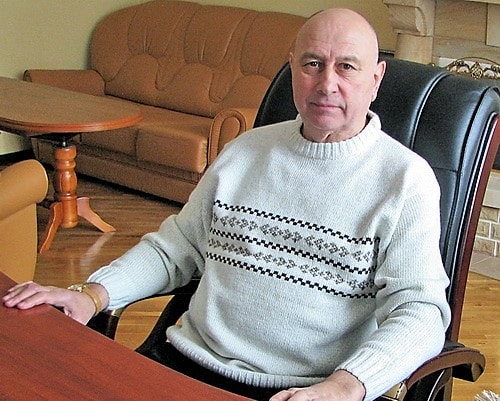
Dmitry Dvorkis
This conflict became truly epoch-making, since it was during it that the very “Vinnitsa clan” emerged from among Dvorkis’ opponents. In whose ranks today you can see many participants in those events: the Groysman family, Vladimir Kistion, Andrei Reva, Alexander Dombrovsky and others. Anatoly Matvienko, of course, could have led this clan, but at the very end of the 90s he again left Vinnitsa for Kyiv to engage in big-time politics. And the main Kyiv patron of the “Vinnitsa” soon became the more active Petro Poroshenko, whose father became close friends with Boris Groysman, the father of the future mayor of Vinnitsa, and then the future prime minister of Ukraine. Nevertheless, Anatoly Matvienko remains a “clan-like” figure, being very closely connected (including in common business) with many “Starovinnitsky” people whom he knows from the 80s and 90s.
Sergey Varis, for Skelet.Info
CONTINUED: Matvienko Anatoly: Komsomol members of the Vinnitsa clan. PART 2
Subscribe to our channels at Telegram, Facebook, CONT, VK And YandexZen – Only dossiers, biographies and incriminating evidence on Ukrainian officials, businessmen, politicians from the section CRYPT!

